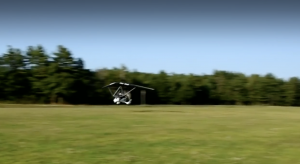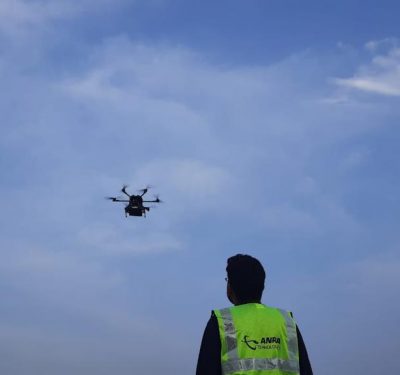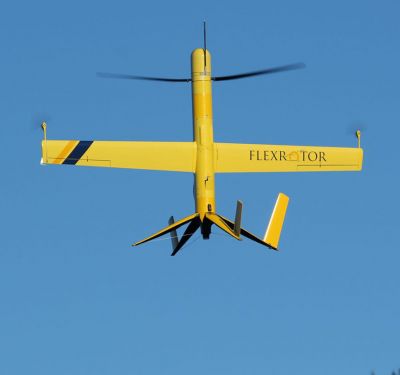Honeywell is developing a new technology suite for light drones, including hydrogen fuel cells, that enables them to fly three times longer and with less human intervention.

Honeywell Light UAV
Compared with traditional drones using batteries and line-of-sight radio links, drones equipped with Honeywell’s Beyond Visual Line of Sight (BVLOS) technologies can fly farther, carry more weight, avoid hazards up to three kilometers away and stream video of their progress anywhere in the world, according to the company. BVLOS applications include last-mile package delivery, military intelligence, surveillance and reconnaissance, pipeline and power line inspection, search and rescue, or use by first responders.
The BVLOS suite will allow drone designers to combine data in new ways to save weight and power. It comprises:
- Honeywell’s 600-watt and 1200-watt hydrogen fuel cells
- Honeywell’s RDR-84K multipurpose radar
- Honeywell’s inertial measurement units (IMUs)
- Honeywell’s UAV Satcom – the world’s smallest and lightest satellite transceiver
The fuel cells in the BVLOS suite operate three times longer than batteries with equivalent output. They work silently, unlike gasoline engines, and emit no greenhouse gases. Operators can refuel or swap hydrogen tanks in minutes, enabling more time in the air.
Hydrogen Fuel Cells
A hydrogen fuel cell is an electrochemical device that uses a chemical process to convert hydrogen to electrical power, which in turn can drive one or more electric propulsion motors on the unmanned aerial vehicle. Electricity, water and heat are the only products of this chemical process, which makes hydrogen an extremely clean fuel.
Hydrogen fuel cells are smaller, lighter, more versatile and more resilient than alternatives like batteries or small gasoline and diesel engines. Unlike batteries, hydrogen fuel cells do not need to be recharged. Connect a carbon fiber hydrogen storage tank to the fuel cell, and fly. Drones powered by a hydrogen fuel cell have much longer range and flight duration than a comparably sized battery-powered aircraft.
From its 2020 acquisition of Ballard Unmanned Systems, a producer of fuel cell technologies for UAVs, Honeywell now makes 600-watt and 1200-watt liquid-cooled hydrogen fuel cells. They are suited for military and commercial missions of all kinds, including intelligence, surveillance and reconnaissance (ISR), search and rescue, law enforcement, infrastructure and agriculture inspections, and other missions where silent operation and long duration flights are critical.
Other Elements of the Suite
Honeywell’s RDR-84K is a phased-array radar that steers beams electronically, meaning it has no moving parts and requires minimal maintenance. It also requires no heavy cooling systems. In addition to avoiding other aircraft, the radar can detect obstacles, map terrain and identify landing zones. It can act as a radar altimeter and provide mapping for alternate navigation if GPS guidance fails.
Its radar computes an avoidance path using built-in circuitry, rather than requiring a separate processor. Its satellite uplink can be used to download real-time weather and traffic reports from other drones.
“These technologies will help make drones profitable for a world of new applications,” said Stéphane Fymat, vice president and general manager of Honeywell’s Unmanned Aerial Systems and Urban Air Mobility business unit.
“These innovations give drone builders and operators a whole new range of options,” said Sapan Shah, product manager for Honeywell’s Unmanned Aerial Systems and Urban Air Mobility business unit. “More time in the air, more awareness of surroundings and traffic, better connectivity: These are the building blocks of safe, profitable drone operations of all kinds, and that’s what we’re delivering.”






